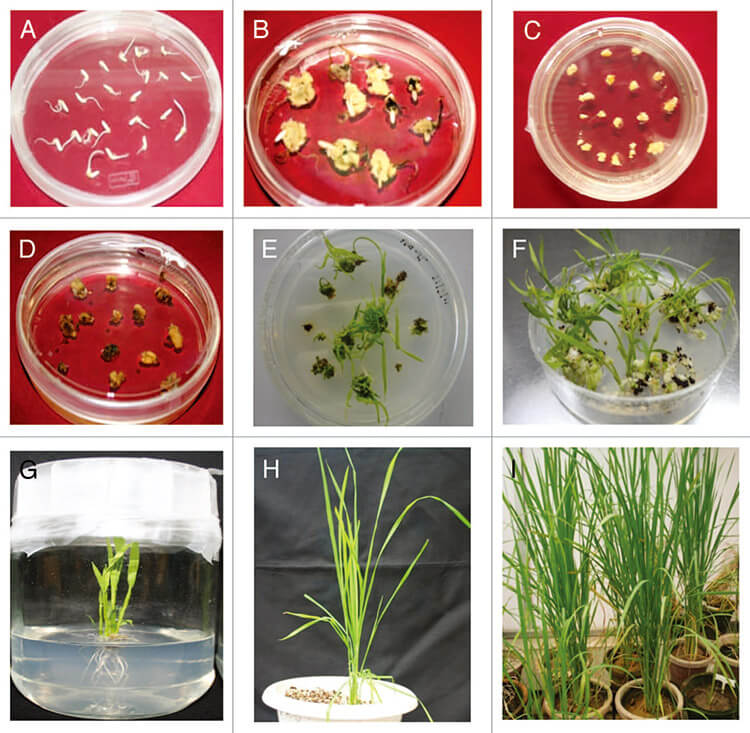Lifeasible is a recognized leader in plant biotechnology. We have solid background and expertise for the generation of geneticaly modified plants.
Oryza sativa, or rice, is an important cereal crop that provides staple food for more than half of the world’s population. Therefore, it has been used as a model plant for gene function and regulation studies, aiming at improving agricultural traits such as enhanced resistance against biotic and/or abiotic stresses.
Agrobacterium-mediated transformation is the most common method for introducing genes into O. sativa, due to its high transformation efficiency and low T-DNA copy integration. With rich experience in plant transformation, Lifeasible has developed a variety of fully-fledged Agrobacterium-mediated transformation methods for O. sativa, listed as follows:
With our excellent scientists and experts, as well as comprehensive collaborations with renowned research institutes and companies, Lifeasible provides our worldwide clients with tailored protocols for O. sativa transformation, including:
Lifeasible is happy to share our featured technologies, service plans, collaboration options and more to plant scientists and researchers all over the world.
 Figure 1. Agrobacterium-mediated transformation of callus derived from mature seeds of indica rice (Sahoo and Tuteja, 2012).
Figure 1. Agrobacterium-mediated transformation of callus derived from mature seeds of indica rice (Sahoo and Tuteja, 2012).
Reference:
Lifeasible has established a one-stop service platform for plants. In addition to obtaining customized solutions for plant genetic engineering, customers can also conduct follow-up analysis and research on plants through our analysis platform. The analytical services we provide include but are not limited to the following:
STU-CRISPR System Improves Plant Genome Editing Efficiency
April 19, 2024
Application of Exosomes in Facial Beauty
April 12, 2024